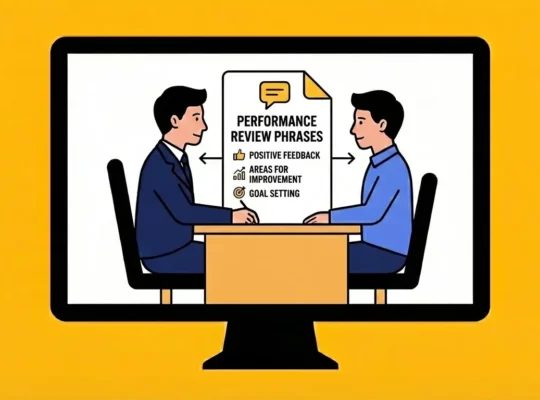Automated workforce management systems can help organizations streamline processes, reduce costs, and improve productivity. By automating tasks such as scheduling, time tracking, and payroll, businesses can free up valuable time and resources to focus on strategic initiatives. In this article, we will explore the benefits of automated workforce management and discuss how to implement these systems in your organization.
Table of Contents
- What is Workforce Management Automation?
- The Power of Automated Workforce Management
- Why Automating Workforce Management is Crucial for Modern Businesses
- The Role of HR Tech in Workforce Automation
- Challenges in Workforce Management Automation
- Best Practices for Successful Implementation
What is Workforce Management Automation?
Workforce management (WFM) refers to an integrated system used by businesses to track employee productivity, schedule shifts, and manage labor costs. By automating tasks, businesses can reduce the time spent on administrative work, improve accuracy, and create a more engaged workforce.
Workforce management automation is like having a personal assistant for your HR team. It uses technology to handle the nitty-gritty tasks, so you can focus on the bigger picture stuff. Imagine saying goodbye to manual scheduling, error-prone payroll calculations, and endless compliance paperwork. With automation, you can streamline these processes, save time, and reduce errors.
Automation is your secret weapon for:
- Efficient Scheduling: Creating optimized work schedules that align with business needs and employee preferences.
- Accurate Payroll: Ensuring that employees are paid correctly and on time, every time.
- Simplified Compliance: Staying compliant with labor laws and regulations without the hassle of manual tracking.
- Enhanced Productivity: Freeing up your HR team to focus on more strategic initiatives, such as employee development and talent acquisition.
Key Components of Automated Workforce Management
A comprehensive automated workforce management system includes several critical components designed to streamline HR tasks.
1. Scheduling and Time Tracking
- Employee Self-Service: Allow employees to manage their schedules and time-off requests through a user-friendly portal.
- Shift Scheduling: Automatically create optimized work schedules based on employee availability and business needs.
- Time Tracking: Accurately track employee hours worked, overtime, and absences.
2. Payroll Automation
- Accurate Calculations: Automatically calculate payroll based on hours worked, overtime, and other factors.
- Compliance Management: Ensure compliance with labor laws and regulations, including minimum wage, overtime rules, and tax withholdings.
- Time and Attendance Integration: Seamlessly integrate time-tracking data with payroll processing for accurate calculations.
3. Compliance Management
- Certification Tracking: Manage employee certifications and licenses to ensure compliance with industry standards.
- Overtime Management: Monitor overtime hours and ensure compliance with labor laws.
- Regulatory Updates: Stay informed about changes in labor regulations and automatically adjust your systems to comply.
4. Performance and Compensation
- Performance Tracking: Set goals and track employee performance against established metrics.
- Compensation Management: Link compensation to performance and automate merit-based adjustments.
- Talent Management: Identify high-potential employees and provide opportunities for growth and development.
The Power of Automated Workforce Management
Automated workforce management systems offer a wide range of benefits that go far beyond simply saving time. Here’s how automation can transform your organization:
1. Improved Accuracy
- Eliminate Human Error: Automation minimizes the risk of errors in time tracking, payroll calculations, and other critical tasks.
- Ensure Compliance: Automated systems can help you comply with labor laws and regulations.
2. Enhanced Efficiency
- Streamline Processes: Automate routine tasks to save your HR team time and resources.
- Reduce Administrative Burden: Let technology handle mundane tasks, allowing your team to focus on strategic initiatives.
3. Increased Employee Satisfaction
- Empower Employees: Self-service tools empower employees to manage their schedules and requests, giving them greater control over their work.
- Improved Communication: Automated systems reduce misunderstandings between employees and managers by streamlining communication and improving satisfaction.
Why Automating Workforce Management is Crucial for Modern Businesses
In today’s fast-paced business environment, automating workforce management is essential for staying competitive.
Enhancing Employee Productivity
Administrative tasks can be time-consuming and take HR professionals away from more important responsibilities. Automation helps HR departments focus on talent development and strategic initiatives, ultimately boosting productivity across the organization.
Cost Efficiency
Automation can significantly reduce operational costs by streamlining processes and minimizing the need for manual intervention. For example, automating payroll reduces the need for dedicated staff to handle payroll processing, which can save both time and money.
Increased Accuracy and Reduced Human Error
Manual data entry is prone to mistakes, which can lead to costly errors in payroll, scheduling, and compliance. Automation ensures consistent and accurate data collection, eliminating these errors and enhancing overall efficiency.
Boosting Employee Engagement
Self-service tools are a powerful way to boost employee engagement. When employees can easily manage their time, requests, and personal information, they feel more in control of their work-life balance, which leads to higher satisfaction and productivity.
The Role of HR Tech in Workforce Automation
The rise of HR technology has revolutionized the way organizations manage their workforce. By leveraging advanced technologies like artificial intelligence (AI) and machine learning, businesses can automate even more aspects of workforce management, a trend known as hyper-automation.
Key Benefits of HR Tech in Workforce Automation
- Streamlined Processes: HR technology can automate routine tasks, freeing up HR teams to focus on strategic initiatives.
- Improved Efficiency: Automation can reduce errors, improve accuracy, and enhance overall efficiency.
- Enhanced Decision-Making: HR tech can provide valuable insights and data-driven recommendations to support decision-making.
- Improved Employee Experience: Automated systems can empower employees and improve their overall experience by providing self-service options and streamlining processes.
Integration with Workforce Management Platforms
For effective automation, HR technology must be integrated with existing workforce management platforms. This ensures seamless operations and a unified experience for both HR and employees. Key areas of integration include:
- Payroll Systems: Integrate HR technology with payroll systems to automate time tracking, attendance management, and payroll calculations.
- Scheduling Tools: Integrate with scheduling software to optimize work schedules and reduce manual planning.
- Performance Management Platforms: Connect HR technology with performance management systems to track employee performance, set goals, and provide feedback.
Challenges and Considerations in Workforce Management Automation
While the benefits of automated workforce management are significant, it’s important to be aware of the potential challenges and considerations:
1. Data Security
- Protect Sensitive Information: Ensure that your automated system has robust security measures in place to protect sensitive employee data, such as personal information and financial records.
- Regular Audits: Conduct regular security audits to identify and address potential vulnerabilities.
2. Cost of Implementation
- Initial Investment: Implementing a new workforce management system may require an initial investment in software, hardware, and training.
- ROI Analysis: Carefully evaluate the potential return on investment (ROI) to ensure that the benefits outweigh the costs.
3. Over-reliance on Automation
- Human Oversight: Remember that automation is a tool, not a replacement for human judgment. It’s essential to have human oversight to ensure that the system is working effectively and making appropriate decisions.
- Avoid Over-Automation: Avoid automating tasks that are better suited for human judgment or that require a high level of customization.
While automation can streamline many processes, human oversight is still necessary. Automated systems can’t replace the nuanced decision-making skills of HR professionals, and over-reliance on automation can lead to issues if not managed properly.
Best Practices for Successful Implementation of Automated Workforce Management
Implementing automated workforce management systems can be a complex process, but by addressing common challenges and following best practices, organizations can maximize the benefits of these solutions.
Change Management Strategy
Develop a comprehensive change management plan to address employee concerns and facilitate the transition to the new system.
Data Security Measures
Implement robust security measures to protect sensitive employee data, including encryption, access controls, and regular audits.
Employee Training
Provide thorough training to employees on how to use the new system effectively.
Phased Implementation
Consider a phased approach to implementation, starting with a pilot program to test the system and address any issues before full-scale deployment.
Continuous Improvement
Monitor the system’s performance and make adjustments as needed to optimize its effectiveness.
The benefits of automated workforce management, from increased accuracy to improved employee engagement, make it a must for modern businesses. Automation helps companies reduce costs, boost productivity, and provide a better employee experience. With tools like automated scheduling and payroll systems, HR departments can focus on what really matters: developing talent and driving organizational growth. At Review.jobs, we encourage businesses to explore the possibilities of workforce automation to stay competitive in a rapidly evolving workplace environment.





